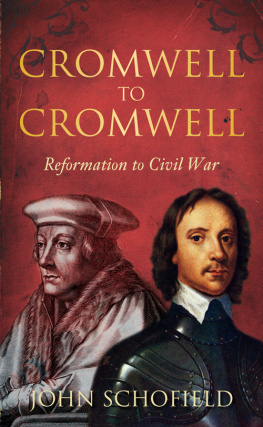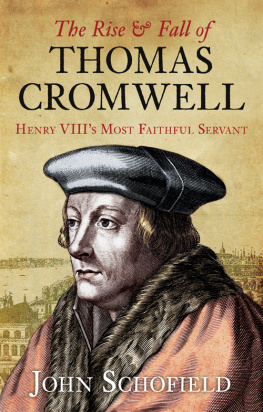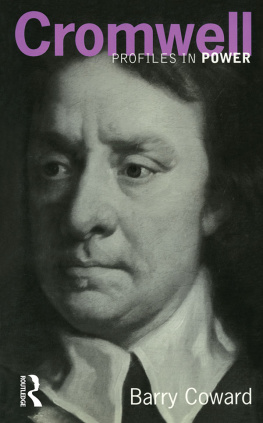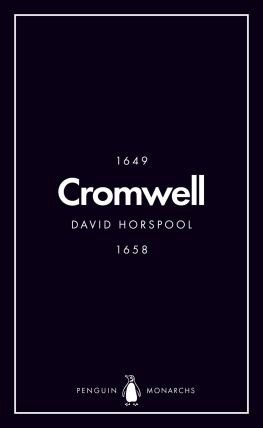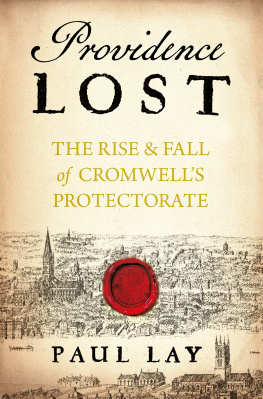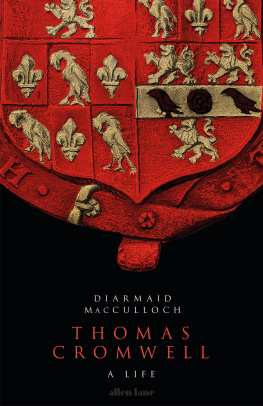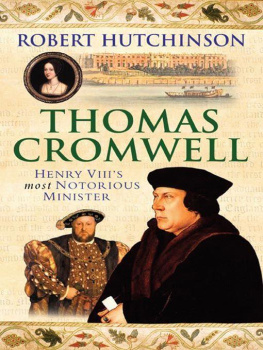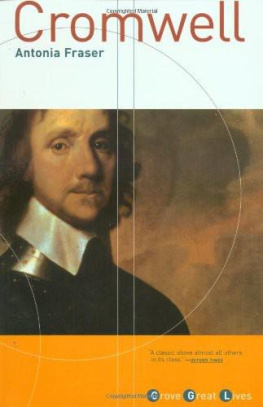
For Nicola and Richard
My thanks to Tony Morris, who, when I was thinking about doing something on these lines but had only fuzzy ideas, suggested the title and has been supportive ever since.
Inexpressible thanks for the labours of S.R. Gardiner over a century ago in producing what must be one of the greatest achievements ever in historical writing. If, in the sections on the Stuarts, his name appears more frequently in the notes than any other, that implies no disrespect to modern authorities. They have been consulted as well, and most of them recommend reading Gardiner anyway.
I am grateful to all other scholars who have studied and written about the Tudors and the Stuarts. A great deal of material has been consulted for this work, but it is impracticable to list every remotely relevant or worthwhile article, book or monograph, and there is no point in padding out the footnotes and bibliography simply to try and impress.
Thanks to Newcastle University and particularly Professor Tim Kirk, Head of the School of Historical Studies, for accepting me as a guest member and visiting scholar, thereby allowing me to do the necessary research for this book; and to the staff of Newcastle and Durham University libraries. Also to John Cannon, Emeritus Prof. at Newcastle, for kindly offering to read through the manuscript and for his many helpful suggestions, and to Simon Hamlet, Abigail Wood and their colleagues at The History Press for bringing the work into print.
CONTENTS
1.Thomas Cromwell. (Courtesy of Ipswich School archive)
2.Oliver Cromwell, from a painting by an unknown artist. (Authors Collection)
3.Henry VIII by Hans Holbein. (Authors Collection)
4.Portrait engraving of Cardinal Wolsey. (The History Press Archive)
5.Edward, Prince of Wales. (Authors Collection)
6.Thomas Cranmer by Gerlach Flicke. (THP Archive)
7.Lady Jane Grey. (THP Archive)
8.Portrait engraving of Mary, Queen of England. (THP Archive)
9.The burning of John Rogers, 4 February 1555, the first of Marys martyrs. (THP Archive)
10.The martyrdom of Archbishop Cranmer, 21 March 1556. (THP Archive)
11.Seal of the Exchequer in the reign of Elizabeth I. (THP Archive)
12.Great Seal of Elizabeth I. (THP Archive)
13.Portrait of Sir Walter Raleigh. (THP Archive)
14.Frontispiece to Saxtons maps of England, from the engraving by Augustine Ryther, 1579. (Authors Collection)
15.Mary Queen of Scots, the Brocas picture. (THP Archive)
16.Portrait engraving of Robert Cecil. He warned King James that the storm comes before it breaks. (THP Archive)
17.Eliza Triumphans, from the engraving by William Rogers, 1589. (Authors Collection)
18.James I & VI and Anne of Denmark. (THP Archive)
19.Prince Henry of Wales, eldest son of James and Anne. He died of typhoid in 1612 aged eighteen, leaving his less gifted brother Charles (the future Charles I) as heir to the throne. (THP Archive)
20.Portrait engraving of Francis Bacon. (THP Archive)
21.Charles I and Henrietta Maria. (THP Archive)
22.Print of a Van Dyck painting of Charles I, reproduced by Hollar at the time of the kings execution in 1649. (THP Archive)
23.Charles I, from the engraving by William Hole, 1625. (Authors Collection)
24.The Sovereign of the Seas from the engraving by John Payne, 1637. (Authors Collection)
25.John Hampden, from Nugents Life of Hampden. (Authors Collection)
26.John Pym, from a miniature by Samuel Cooper. (Authors Collection)
27.Oliver Cromwell, from a miniature by Samuel Cooper, in the Baptist College at Bristol. (Authors Collection)
28.Statue of Oliver Cromwell, by Thorneycroft, erected at Westminster in 1899. (Authors Collection)
29.John Milton, from an engraving by Faithorne. (Authors Collection)
30.Charles II in middle age. (THP Archive)
31.Coronation of Charles II in Westminster Abbey. (THP Archive)
This work is a sequel to the recent biography of Thomas Cromwell. It examines how the principles of the Reformation changed and evolved in England, in some cases out of all recognition.
English reformers in the 1530s, led by Cromwell, had a near reverence for kingly rule and authority. Resisting the king was tantamount to resisting God. Even on a matter of conscience, the will of the king should prevail. Yet just over 100 years later, Charles I was called the man of blood, and Oliver Cromwell famously declared that we will cut of his head with the crown on it.
Now the core question how did we get from A to B? How did the deferential Reformation become a regicidal revolution? This book is one mans quest for an answer.
That answer, so I am persuaded, cannot lie entirely in Ship Money, or Archbishop Laud or even in the disdain Charles I showed for Parliament. These are the immediate causes of the Civil War; but something else, something deeper, must account for the difference in psyche and mindset between the deferential reformers of the 1530s and the godly revolutionaries of the 1640s.
This is a big subject, but knowing how readers and publishers appreciate brevity, I have aimed for a succinct account that highlights the salient and most significant developments in church, state and society between the two Cromwells. This book is not a general narrative of the Tudor and early Stuart periods; rather it concentrates on the core question above and selects the most germane material.
This work focuses on England. Events in Scotland and Ireland will be treated as and when they are relevant to the main subject, but details of the Scottish and Irish reformations are left to those more qualified to discuss them.
Regarding terminology, the words evangelical, reformer and Protestant are used interchangeably to avoid repetition, evangelical being understood in its sixteenth-century sense, meaning Gospel. The new learning was another term used in Tudor times to describe Protestantism.
If the early sections of Chapter 2 read like a rsum of Thomas Cromwells life, this is because I cannot assume that all those who pick up this book have read the previous one. Apologies to those who find this material rather familiar, but it would hardly do to begin with Cromwells fall.
1
L UTHER
On a late spring evening, on 4 May 1521, a mystery visitor arrived under escort at Wartburg Castle near Eisenach in Germany. He was ushered into a room hastily prepared for him, and given books, paper and a writing table. The castles occupants were told that a certain Knight George (Junker Jrg) would be staying with them for a short while. Only a carefully select few knew his real name it was Martin Luther, the notorious heretic and excommunicate.
Luther had been at the diet of Worms in obedience to a summons from the Holy Roman Emperor, Charles V. In the emperors presence Luther defended his writings and refused to recant when directed to do so. For this he was placed under the imperial ban, though Charles did honour his promise of safe conduct, and Luther was allowed to return home. For his own protection, however, and with the knowledge of Frederick the Wise, Elector of Saxony where Luther lived, Luthers friends staged a mock kidnap and spirited him away to Wartburg. With a beard to help his disguise, he remained several months there in seclusion from the outside world, concentrating on his translation of the New Testament and many other writings.
Safe though he was in Wartburg, at least for the time being, Luther knew that his struggles with opponents were far from finished. We must resist that most atrocious wolf with all our strength, he urged his friend, George Spalatin, referring to his old adversary on the indulgence crisis, Cardinal Albrecht. Rumours soon reached him of disturbances among students, artisans and peasants, supporting Luther and hostile to the German clergy. The authorities were seriously alarmed. Among Luthers Wartburg works was a commentary on the
Next page
